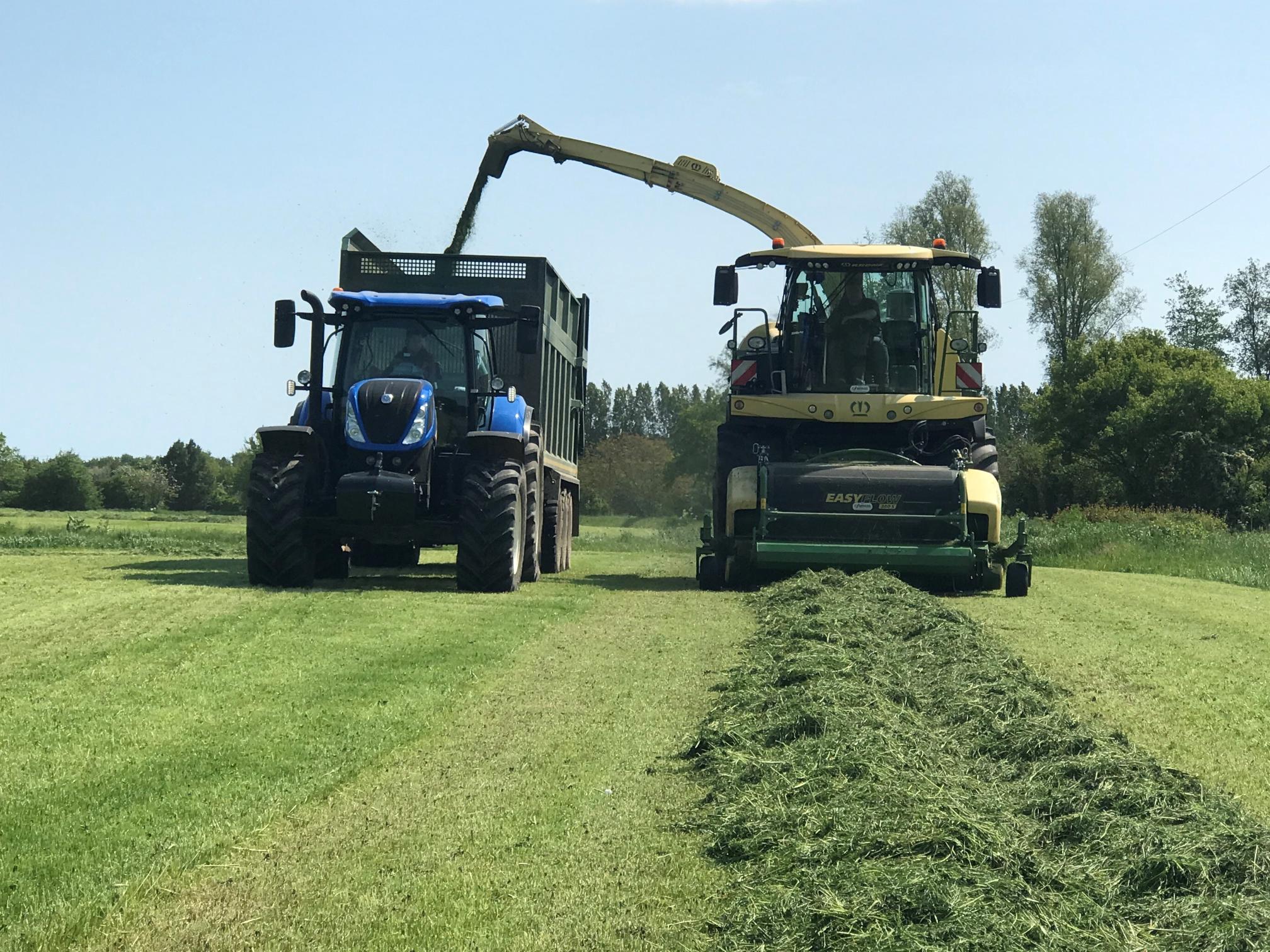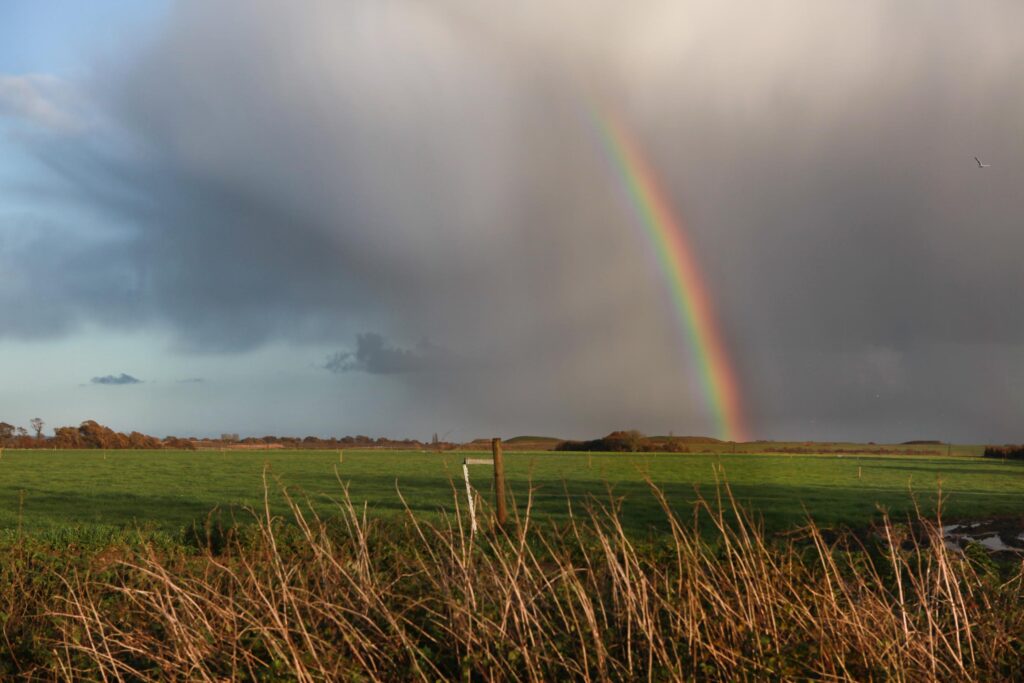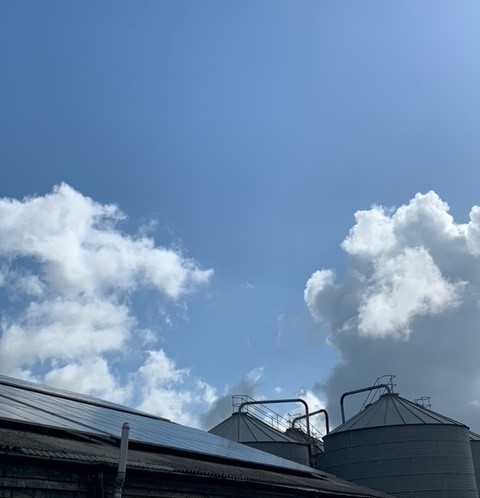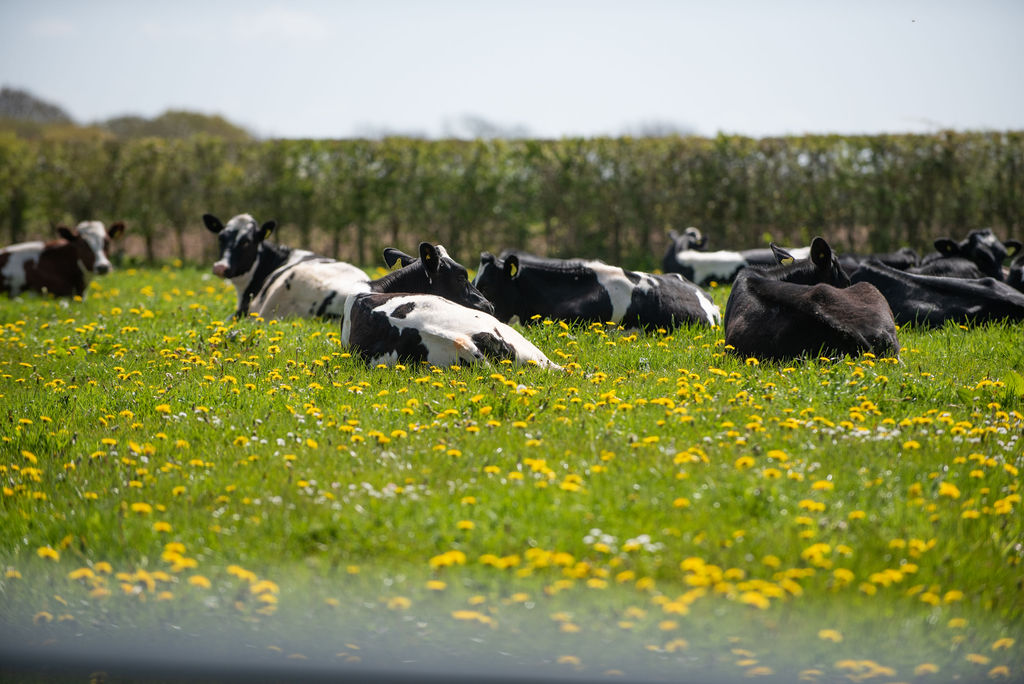
To remain sustainable as a farming business we must clearly adapt to the changing climate and increasingly extreme weather patterns that we’re now seeing in the UK. Cameron Lewis, our MD, looks at some of the steps we’ve been taking to evolve our operations to better cope with climate change.
The UK growing season now sees regular extreme variations. Typically, we now see very wet mild winter and spring periods, followed by very dry hot summers.
Whilst our farm, which is based on the Chichester plains, has always been quite dry during the summer months, these more arid conditions have tended to arrive earlier and last longer over the last decade. Rainfall – when it comes – is also arriving in larger and in shorter periods of time.

Organic farming and climate change
As a mixed farm with grassland and cereal crops in rotation we’ve historically been quite well protected, spreading our cropping plans across both autumn and spring planting schedules. Being organic also means our cropping rotations are already well balanced, ensuring we protect and maintain good soil health.
Adapting to climate change
Despite our efforts there are a number of areas in which we’ve had to adapt, to respond to these shifting weather patterns and climate change. Here are some of the key areas that we’ve been focusing on:
- Increasing land areas dedicated to biodiversity– 9% of our land is now in a 5-year mid-tier stewardship scheme. We’ve also signed up to additional measures to promote soil health and nature within the SFI 2024 scheme. This, along with our organic farming principals, is helping increase insect, flora and fauna across the farm.
- Aiming to farm with no bare soil – this approach focuses on protecting the soil and ensuring that a living crop is growing all year round. After each cash crop is harvested, we replace it with a green cover crop to bridge the gap over winter until the next spring crop is sown. By keeping a living root system in the soil, the soil biology and ecosystem benefits helping to keep vital nutrients fixed in the plant root system as well as minimising soil erosion. Given the extreme amounts of heavy rainfall which we’ve seen over the last few years this has really helped to protect the soils on our farm, especially from extreme temperature fluctuations.
- Boosting organic matter – an additional benefit of growing cover crops has been the increasing organic matter in our soils. As part of our drive to be carbon neutral one of our key objectives is to increase carbon in our soils. When we turn the cover crop into the soil to plant the next cash crop we add the biomass back into the soil to breakdown. This helps to increase organic matter, and year on year is helping to lock up more carbon into the soil.
- Introducing dual cropping plans – dual cropping might mean that we plant clover seed within a crop of wheat. This has two benefits; the clover plant, being a legume, will fix nitrogen in the soil which the wheat plant can then use. It also keeps the soil protected from the warmer summer temperatures.
On our grass pastures we’re also adapting the drier summer climate in three ways:
- When planting our new grass leys, we’re adding chicory into the white clover seed mix. This plant is more drought resistant. The deep rooting system will find moisture during the dryer parts of the year and provide grazing cover for the cows.
- On part of the farmland we manage, we’re fortunate to be able to access water for irrigation. Over the last two years we’ve been investing in both irrigation equipment and storage to allow us to water key grazing paddocks.
- We’ve invested in machinery that can apply liquid waste from our cows that are housed during the winter months. By installing additional winter storage, we can apply the liquid bi-product from the cows to the growing crops and grass leys during the spring and summer months. This helps to both add nutrient and moisture to crops.
Ongoing challenges
Whilst we’re working hard to adapt to climate change, we’re experiencing some real challenges. Often the window of opportunity to prepare for planting and harvesting is much shorter. And in the spring, there is more of a need to let the ground dry out, after large amounts of rainfall, so that we can start planting. Once the soil starts to dry out, the longer dry spells mean conditions can quickly become too dry. Spreading our crop plans between autumn and spring has helped to spread this risk to a degree, but in reality, a shorter planting window means we have to work more efficiently and quicker without increasing costs!

Embracing solar power
These drier conditions and our location on the south coast has also created opportunities. Solar power is one example where we’re using our location to our own advantage. As a result, we’re investing in a number of rooftop and on ground solar installations, with an aim to rely solely on green energy as part of our carbon neutral journey.
Climate change is here to stay, and it’s critical that we acknowledge its impact and take steps to adapt. We remain alert about the work we have to do, and how we can evolve our operations to protect the future of this very special space which we look after.



Recent Comments